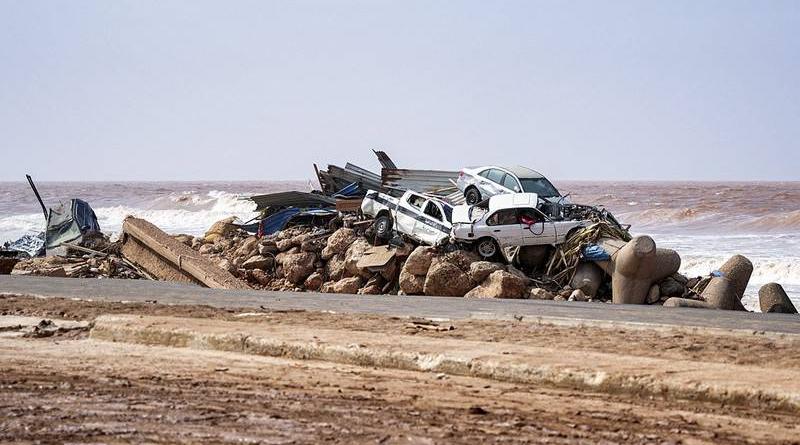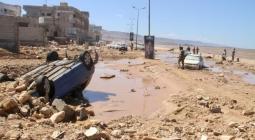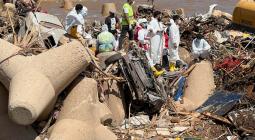Libya floods: There will be many, many more Dernas

The Libyan town of Derna is on the coast, at the end of a valley with a seasonal river. Because flooding has damaged the city before, two dams were built to contain the river.
September’s rainfall is usually 1.5mm. On Sunday, 10 September, 400mm fell in one day. One dam cracked and a three-metre wall of water tore through the concrete.
So far, more than 11 000 people are confirmed dead.
The World Meteorological Association says the number would be much lower if people had been warned. But Libya does not have a functioning government. The decade-long civil war is unresolved and the country is divided in two. Derna is in the eastern half of the country.
Survivors told the BBC that they had raised the alarm about cracks in the top dam. The ruling warlords had other priorities.
In climate scenarios, a lot comes down to governance. Better leaders and institutions mean countries are more likely to plan ahead, maintain infrastructure and respond to crises. Libya is ranked 126 of 185 countries on the ND-Gain Index, which calculates resilience to climate change.
The 10 September flood came from Storm Daniel, which also battered Greece and Türkiye. When it crossed the Mediterranean, hot water from the sea energised it. That meant a more violent storm, and more rain.
Oceans and seas are hotter because greenhouse gas emissions trap heat in the atmosphere. Most of that heat ends up being absorbed by oceans. Scientists have warned for decades that this will “supercharge” storms. Those warnings are no longer being written in the future tense.
On the Friday before Derna was submerged, the United Nations climate agency released a report taking stock of what countries are doing to lower their emissions and adapt to a changing world.
The 2015 Paris Agreement, where 196 countries agreed to do their all to keep the world habitable, requires countries to submit plans every five years. The idea is that these plans become more ambitious over time.
But little has been done to reduce emissions. Carbon levels are now at their highest level in two million years. The world is already hotter by 1°C.
The UN report warns: “There is a rapidly closing window of opportunity to secure a liveable and sustainable future for all.”
To secure even a 50/50 chance of keeping heating to merely catastrophic levels, the report said greenhouse gases have to peak by 2025. That’s now 15 months away. They then have to drop 43% by 2030, 60% by 2035 and 84% by 2050.
That requires every single country doing every single thing it has promised to do. The continued rise in carbon emissions, and the numbers in the UN report, show that countries are not. The majority of plans submitted to the UN are not costed. Of those that are, 89% do not say where the money will come from.
And plans without money behind them are little more than wishful thinking.
There is, however, money to increase carbon emissions. Research out this week found that the United States is responsible for a third of all new oil and gas plans. It’s followed by Canada, Russia, Iran, China, Brazil and the United Arab Emirates — the host of the next COP climate meetings from 30 November until 12 December.
With more heat in the global climate system, weather will become ever more destructive. Derna will be relegated to a mere footnote in the very long list of people that pay the price.
Photo by The Press Office of Libyan Prime Minister / AFP - The floods were caused by torrential rains from Storm Daniel, which made landfall in Libya on Sunday after earlier lashing Greece, Bulgaria and Turkey.
This article first appeared in The Continent, the pan-African weekly newspaper produced in partnership with the Mail & Guardian. It’s designed to be read and shared on WhatsApp. Download your free copy here.





